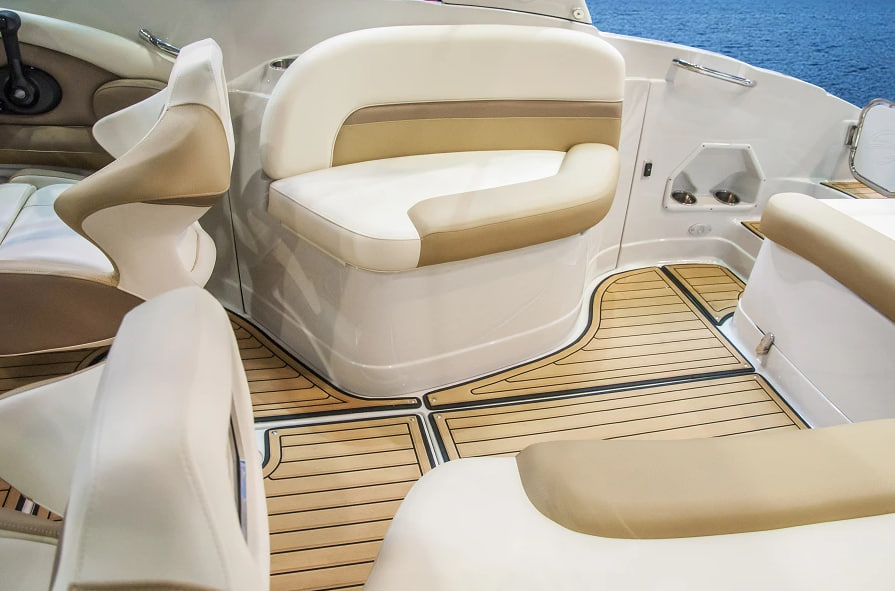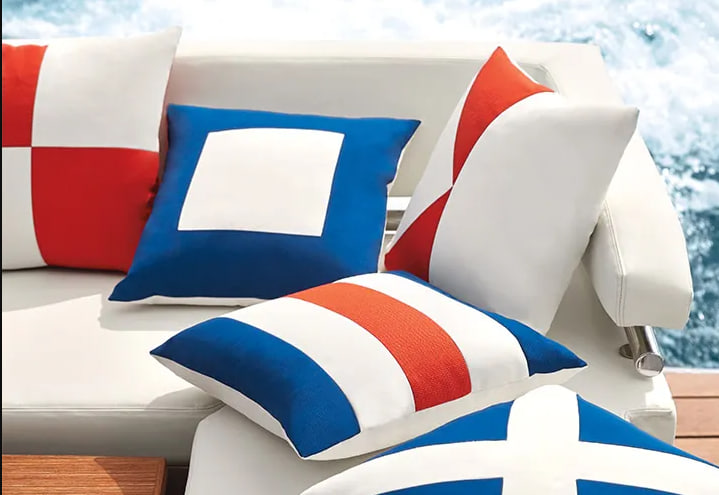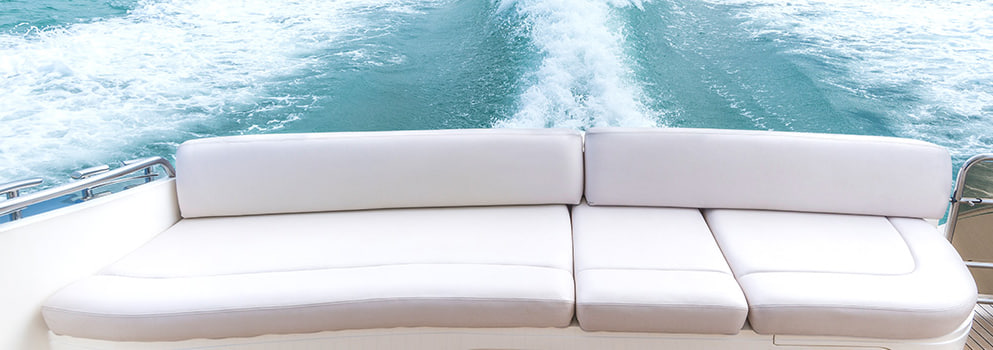Boat Upholstery Repair: Signs Your Seats Need Attention
Boat upholstery is more than just a decorative detail — it plays a vital role in both the comfort and durability of your vessel. Whether you’re using your boat for weekend getaways, fishing trips, or coastal cruising, maintaining clean, intact seating is essential for both appearance and performance. Over time, even the best marine-grade materials begin to show signs of wear. Recognizing those early signs can help you avoid more expensive boat upholstery repair and preserve the overall condition of your boat.
Cracks and Peeling in the Vinyl
One of the first and most obvious indicators that your boat’s upholstery needs attention is visible cracking or peeling of the vinyl. Marine vinyl is designed to withstand UV exposure, saltwater, and heavy use, but even the most durable materials have a lifespan. Constant exposure to sunlight and moisture eventually dries out the vinyl, making it brittle and prone to splitting. Once small cracks appear, they tend to spread quickly, especially if pressure is applied or if water seeps into the foam underneath.
If the cracks are shallow and limited to a small area, a boat upholstery repair professional can sometimes patch the vinyl. However, when the damage covers large sections or involves seams, a full reupholstery may be the best long-term solution.
Fading and Discoloration
Another common sign of aging upholstery is fading or uneven coloration. Over time, the sun’s UV rays break down dyes and pigments in marine vinyl and fabric, leaving your seats looking washed out or yellowed. In some cases, discoloration may also be due to chemical exposure, mildew, or salt buildup.
While fading might seem like just a cosmetic issue, it’s often a warning that the material has weakened structurally. Faded vinyl tends to become thinner and more fragile, which means it’s more likely to tear. If your seats have lost their original luster and color, it might be time to explore boat upholstery repair options or consider complete replacement.
Stains and Mold Growth
Marine environments are ideal for mold and mildew growth — especially if your boat is stored outdoors or in a humid climate. If you start to notice black or green spots on your seats, or if the upholstery smells musty, these are clear signs of mildew or mold colonizing the fabric or foam underneath.
Cleaning may help in the early stages, but if the odor persists or the stains keep returning, the mold has likely penetrated deeper into the cushion. At this point, replacing the foam and recovering the seat is the safest and most hygienic boat upholstery repair approach.
Sagging or Misshapen Cushions
Comfort is a major part of the boating experience. When seat cushions start to sag, lose shape, or feel uneven, the internal foam may be compressed or waterlogged. Marine foam is designed to resist moisture and hold its form, but after years of use, it can flatten or absorb water through worn or damaged upholstery.
Replacing the foam inserts not only restores comfort but also helps protect the internal structure of the seat. If the vinyl or stitching has also deteriorated, consider a full restoration to ensure long-lasting performance.
Loose or Damaged Seams
The seams in your boat’s upholstery are under constant stress from use, exposure, and motion. If you notice loose threads, unraveling stitching, or gaping seams, these are clear signs that your upholstery is reaching the end of its lifespan. Damaged seams allow water and dirt to penetrate the interior padding, leading to mold and quicker degradation.
Seam repairs can sometimes be performed locally if the surrounding vinyl is still intact. However, once seams start failing in multiple locations, the entire cover may need to be replaced — a service typically offered by most boat upholstery repair shops.
When to Repair vs. When to Replace
Not all upholstery issues require full replacement. Small tears, isolated fading, or minor seam separation can often be handled with professional boat upholstery repair — especially if the rest of the seat is in good condition. However, if multiple signs of wear are present, or if the foam and internal structure are also compromised, replacement becomes more cost-effective and durable in the long run.
Regular inspections and seasonal maintenance go a long way in extending the life of your upholstery. However, once wear becomes visible, it’s best to act quickly — both to preserve comfort and to maintain your boat’s value.
Keep Your Boat Looking Its Best
Boat upholstery isn’t just about style — it’s about protecting your investment and enjoying a comfortable ride every time you hit the water. By recognizing the early signs of wear and seeking timely boat upholstery repair, you can avoid costly damage and keep your vessel in top condition.





Post Comment